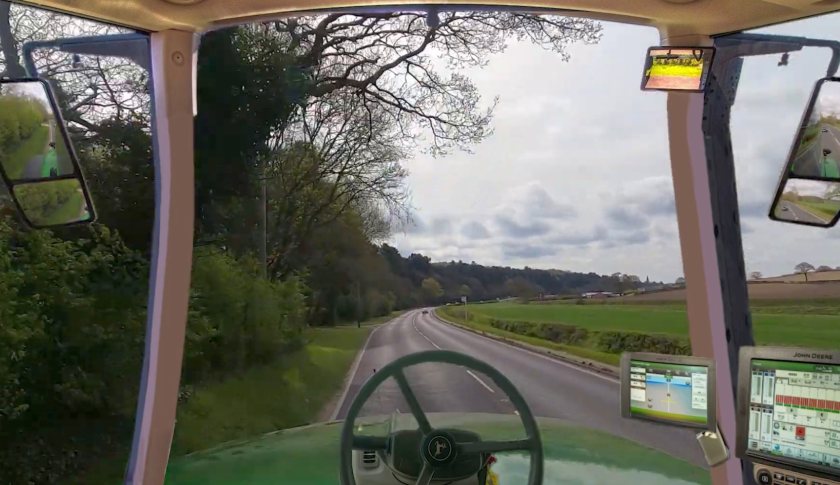
A new virtual reality hazard perception test has been developed to address the training gap for tractor drivers, aiming to cut road incidents involving farm vehicles.
Farming is one of the most dangerous jobs according to accident rates, yet researchers say fatalities would rise by more than 50% if on-road fatalities with vehicles were included in the statistics.
This can be part attributed to limited regulation whereby anyone can drive a tractor on public roads after passing only a basic car test.
Meanwhile, 16-year-olds are also able to take a cursory test using their provisional licence which allows them to drive a tractor – including to and from the test site unaccompanied.
To fill this training gap, researchers at Nottingham Trent University have produced a tractor-specific hazard test which assesses agricultural drivers’ ability to identify and avoid hazards in the road ahead.
They conducted a survey with over 150 farmers who reported facing frequent hazards such as other-driver risk taking, including inappropriate overtaking and concerns over vulnerable road users such as cyclists and pedestrians.
They also reported problems with the environment, including overgrown foliage and potholes, and tractor-specific hazards related to the design of tractors and their stopping distances and turning arcs.
These results were used to create and evaluate a VR hazard assessment using clips of 360-degree footage from real road situations - captured using front, side and rear-view cameras attached to the bonnet and mirrors of a tractor.
It was trialled with 109 tractor drivers and 38 car drivers, measuring awareness across three important aspects.
Firstly, hazard perception required participants to press a button as soon as they saw a developing hazard, while hazard prediction looked at when a hazard began, asking participants “what happens next?”.
The final aspect was hazard avoidance - the clip stopped at a critical decision point and participants were asked “what should you do next?”
The trials showed particularly low levels of hazard perception compared to hazard prediction, while tractor drivers who reported being involved in previous collisions performed worse on the hazard prediction element. Car drivers also outperformed tractor drivers on this metric.
Professor David Crundall, lead researcher of the study, highlighted his concerns over the fact that there is no test which focuses solely on tractors.
He said: "Regardless of the facts that they are much heavier than cars and they handle very differently, the position of the driver creates different blind spots to those of a car, and the hazards that drivers face can be very specific to tractors.
“This is a significant blind spot in road safety, despite the statistics showing that agricultural vehicles pose a real risk on rural roads.
"We hope that this test is the start of a wider commitment to provide support and resources for tractor drivers to improve safety for all road users.”
Following feedback from agricultural colleges and YFCs, the study's next stage aims to develop the test into a teaching resource for young tractor drivers to prevent habitual bad practices and risky attitudes to driving in general.
Ruth Purdie, chief executive of the Road Safety Trust, said that prior to this project, there had been precious little in terms of specialised training for tractor drivers.
"In fact, anyone can drive a tractor on public roads after passing only a basic car test, despite the significant number of complexities involved," she added.
“Perhaps that is why the creation of this intervention has shown particularly low levels of hazard perception among tractor drivers, especially those who report having already been involved in a collision."
The project is being supported by the Road Safety Trust, Esitu Solutions, and the Farm Safety Foundation.
